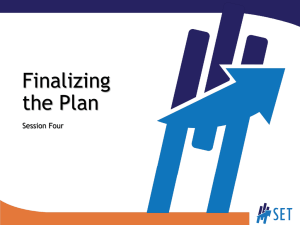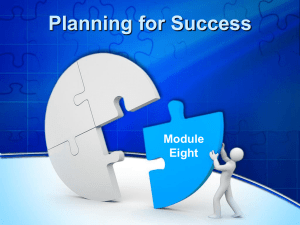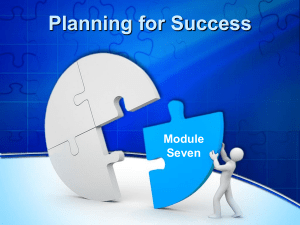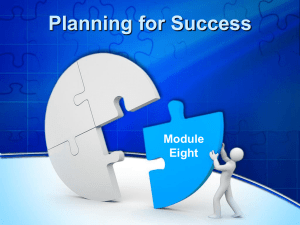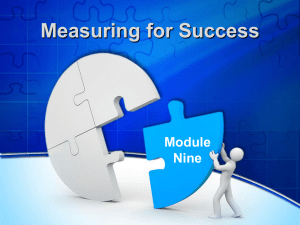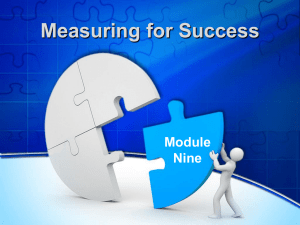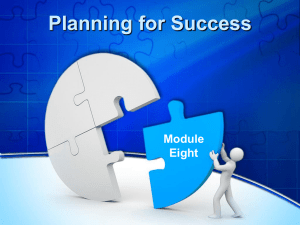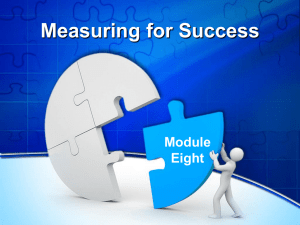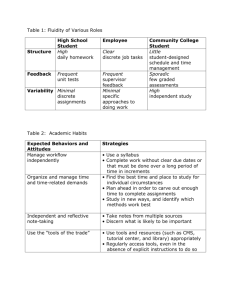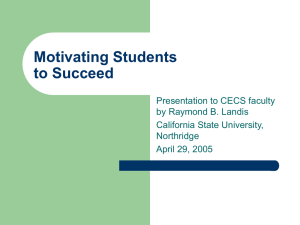Planning for Success presentation
advertisement
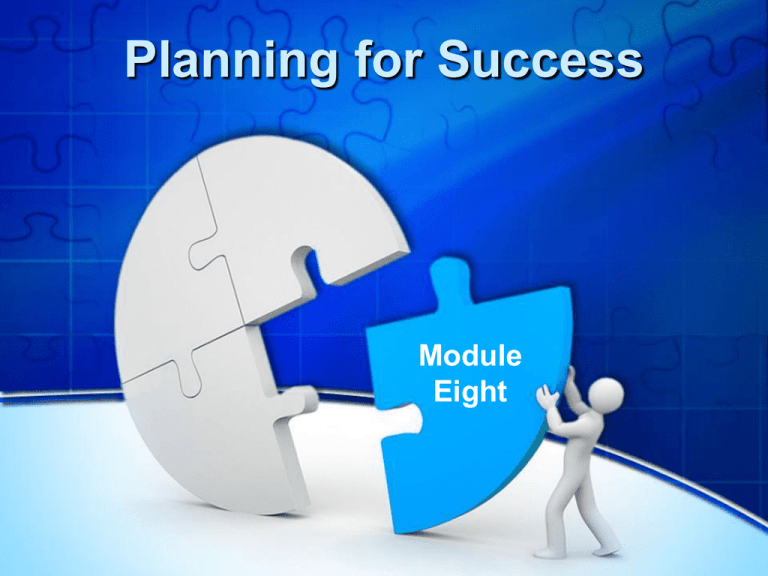
Planning for Success Module Eight Session Overview • • • • • • • Overview of Regional Goals Priority Goals for this Session Identifying the ABCs of Success Quantifying goals and objectives Measuring for Success Strategic Planning Thoughts • Any prior experience? Useful? Interesting? Fun? • Easy to jump straight to the strategies and actions • Better to look at preferred outcomes, then plan actions to reach those outcomes • Different approaches will have different terminology. Examples? • SET: Vision – Goals – Strategies with inbuilt performance measures Overview & Prioritization of Regional Goals • Overview of Regional Goals – from Modules 4, 6b and 7 – any ideas missing? • Priority Goals for this Session – reflect for a moment – visit the wall charts and mark your priorities Identifying the ABCs of Successful Planning Making Changes that Matter Do You Know Your ABCs? Attitudes, Knowledge, and Skills Behavior Conditions Success Moving Forward: Start with the End in Mind Successful planning means thinking with the end product in mind. Success Condition Conditions are the overarching changes you hope to see as a result of your efforts. Changes in conditions take the longest to achieve. Typically 5 years or more Regional Goals and Conditions • Reducing unemployment rate • Reducing poverty rate • Improving high school graduation rate • Expanding number of profitable entrepreneurs • Increasing number of jobs paying good, livable wages • Increasing regional revenue generated from tourism Behaviors Behaviors are concrete actions that individuals or groups take. Conditions change as a result of changed behavior by individuals or groups. These require doing something. Typically 1-2 years Moving from B to C Behavior • Individuals may need to work toward finishing high school • Businesses may need to develop Web sites • Government may need to expand support services to existing businesses Condition To: Increase graduation rates To: Increase the number of successful small enterprises To: Retain and expand existing businesses Attitudes, Knowledge and Skills Attitudes, knowledge and skills are elements individuals or groups can learn or develop in a rather short time. These require “brain power” or new learning. Typically within the first 6-12 months Moving from A to B Attitude/Knowledge/Skill • A person may need to value a high school diploma (attitude) • A business may need to learn how to create a Web site (skill) • Government may need to learn about concerns facing existing businesses (knowledge) Behavior To: Work toward finishing high school (behavior) To: Develop a Web presence To: Expand appropriate support services Writing SMART Goals Your Plan: Start with the End in Mind Imagine five years from now…. • What do you hope is different in your region? • What condition do you hope to change? Conditions Success Your Plan: Go back to the condition you identified. What behaviors need to change to reach that condition? Who needs to make those changes? Behavior Conditions Success Your Plan In order to get to the behaviors you want to change, what attitudes, skills or knowledge need to change? Attitudes, Knowledge, and Skills Behavior Conditions Success Looking Ahead: This Afternoon • Exploring the Value of Measuring • Deciding What to Measure • Using Measures to Promote Success • Tracking Appropriate Measures
